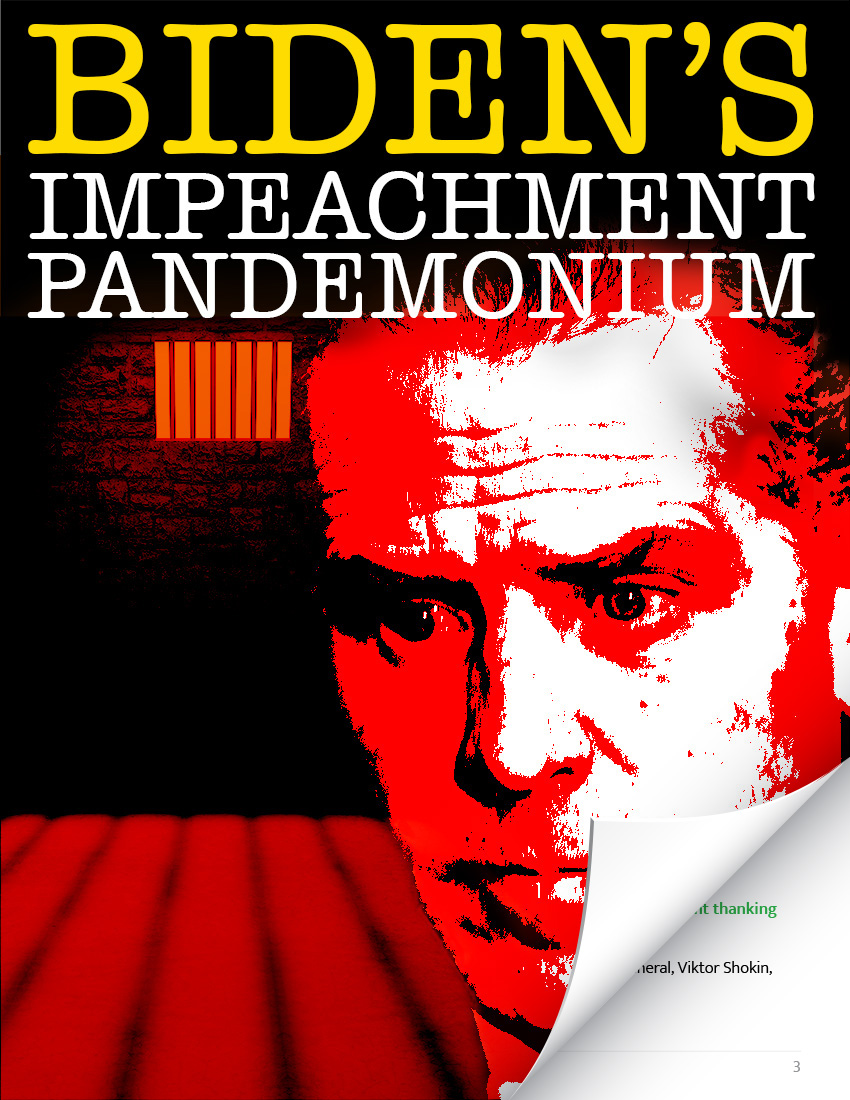
TRUMP SAYS: HUNTER MAKES FORTUNE FROM SHADY DEALS!
BIDEN FAMILY STINKS TO HIGH HEAVENS OF CORRUPTION!
DON'T GET LEFT OUT: HUNTER MUST BE STOPPED!
A variety of reports today, with mixed interpretations, are sure to keep investors and the general public wondering what the heck is actually going on.
After reports last week that retailers are showing growth, we wondered how accurate the numbers actually were in Retails Sales Show Growth…Or Do They?:
It could go either way, but given the hit consumers have taken in the employment rolls, wage cuts and credit contraction, don’t expect a blow-out shopping season.
This morning, we learn that electronics behemoth Best Buy is not expecting a blow-out season, even with computers selling at deep discounts and flat screens at $299:
Best Buy Co., the largest electronics retailer, said its fourth-quarter gross profit rate will be lower than it anticipated as the chain relies on less profitable notebook computers and televisions to drive sales.
After the demise of Circuit City in early 2009, analysts figured Best Buy would pick up all the slack in the discount electronics market. With consumers taking a hit from all sides, Best Buy, along with Target, Macy’s, and Sak’s, are the first victims of the 2009 retail depression, with more retailers sure to follow when the earnings reports start flowing in January 2010.
And while retail stores are cutting costs trying to attract customers, a new report from the Bureau of Labor and Statistics suggests inflation is starting to enter the economy in certain sectors. The Producer Price Index for finished goods is up 1.8% over the prior month. Karl Denninger opines:
The internals are interesting on this report. Food prices actually fell on an annualized basis, down 1.7% from last year this month. Finished consumer goods, excluding foods, however, rose 4.7%, a monstrous rise on an annualized basis. Strong gains were found in booze prices (3.6%), gasoline (35.9%!), pharmaceuticals (5.8%), toys (5.4%), tobacco (7.1%) and jewelry (7.4%). Big declines were registered in natural gas (-15.6%), heating oil (-7.1%), electronics (-5.7%) and novelties (-2.4%).
Isn’t it funny how heating oil is down 7% while gasoline is up 36% – yet both come from the same place (crude oil)? Hmmm…. is there a bit of a game being played here?
—
This report paints a picture of extremely weak technology demand, moderately weak industrial tool demand (-2.6%), but cost-push inflation pressures bearing down on the indices through distortions in the energy market and, of course, the “Big Pig Pharma” companies.
If it costs more to produce essential goods like gasoline, pharmaceuticals, tobacco and food (up 0.5%), then there will certainly be an effect felt by consumers, who will need to adjust budgets to pay for more expensive products in one sector by cutting consumption in areas like electronics and apparel. If the choice for the consumer comes down to paying for gas to make it to work each day and picking up that Xanax to chill out after realizing the economy is falling apart, or buying a new $299 flat screen, consumers will likely opt for the former.
Finally, to further confirm pressures on the economy, there are some notable issues worth mentioning in the manufacturing sector as discussed in the new Empire State Manufacturing Survey:
The Empire State Manufacturing Survey indicates that conditions for New York manufacturers leveled off in December, following four months of improvement. The general business conditions index fell 21 points, to 2.6. The indexes for new orders and shipments posted somewhat more moderate declines but also moved close to zero. Input prices picked up a bit, as the prices paid index rebounded to roughly its November level; however, the prices received index moved further into negative territory, suggesting that price increases are not being passed along. Current employment indexes slipped back into negative territory. Future indexes remained well above zero but signaled somewhat less widespread optimism than in recent months.
You’ll get contrasting interpretations, of course, depending on whether you read Bloomberg’s mainstream report Industrial Production in U.S. Rose 0.8% in November, which attempts to find any and all hints of the possibility of positive economic growth:
Factories in the New York region expanded less than anticipated this month, figures from the Fed Bank of New York also showed. The bank’s general economic gauge, known as the Empire State Index, fell to a five-month low of 2.6 from 23.5 in November. Readings greater than zero signal expansion.
or Zero Hedge’s alternative news analysis, which is not so positive, at Empire State Manufacturing Continues Plunging:
Cash for Clunkers is long forgotten, and it is now time for another manufacturing stimulus: from 34.6 in September to 24.5 in October to a mere 2.55 most recently. Diffusion data suggested further contraction in margins, evaporation of optimism and an ongoing decline in inventories: the whole 5% of Q4 GDP is becoming a Liesmanian myth.
Karl Denninger also provides some insights in Oh Oh…. PPI / Empire (Both Bad):
So this makes two indicators on the same day, both reporting, by my analysis, the same outlook.
The Bottom Line: The pump is wearing off and the ability to reignite the game looks to be quite constrained, as we now are seeing the blowback from The Fed and Government stupidity (stoking speculation via “ZIRP” and spendthrift policies) appear in the PPI – which typically flows through to the CPI in a couple of months.
We’d really like to believe that green shoots have sprawled and are bearing fruit as the economy expands per Bloomberg’s analysis, but the empirical evidence suggests otherwise.

It Took 22 Years to Get to This Point
Two domestic cats have died after drinking raw milk recalled for bird flu risk in California. A...
This article was originally published by Rhoda Wilson at The Exposé. We have all become familiar...
Conservative political commentator Tucker Carlson took part in a wide-ranging interview that was...
Commenting Policy:
Some comments on this web site are automatically moderated through our Spam protection systems. Please be patient if your comment isn’t immediately available. We’re not trying to censor you, the system just wants to make sure you’re not a robot posting random spam.
This website thrives because of its community. While we support lively debates and understand that people get excited, frustrated or angry at times, we ask that the conversation remain civil. Racism, to include any religious affiliation, will not be tolerated on this site, including the disparagement of people in the comments section.


The data is indeed confusing. If I were to hazard a guess, it would simply be this, the massive amounts of money the government has pumped into the economy through the stimulus, cash for clunkers, and various other programs has distorted pockets of the real economy, causing what is perceived to be “inflation” in some areas while real deflation ravages others.
Even then it doesn’t make much sense, as I would expect food prices to be rising and apparently that’s not the case (well not officially anyway, but my grocery bill says different).
I remember a friend of mine from Brazil who went through hyperinflation back in the 80s or 90s. He said, strangely enough, the prices went haywire daily, they could be up one day and down the next. I never got a reason from him how this could happen.
I’m not sure where this comes from, but I see a quote every once in a while. It goes something like this: “The lie can be maintained only as long as the pain can be kept from the people…” The pain is starting to set in. Unemployement… Inflation… Credit squeeze… Once the people wake up, the liars will flee and we’ll be left with a mess to clean up. Everybody got your mops and brooms ready?